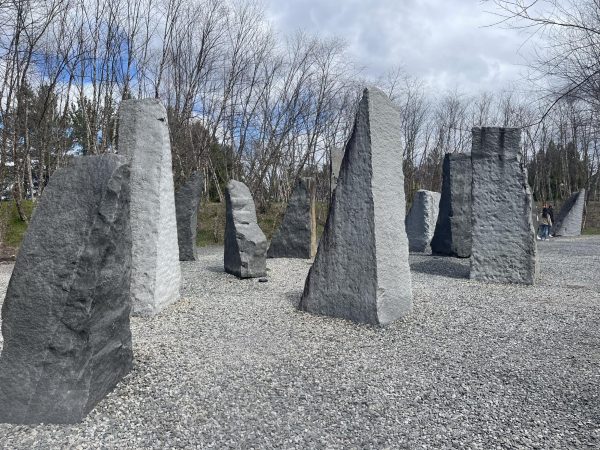Stormin Stofman’s 2014-2015 Winter Forecast
Prepare for this 2014-2015 winter season. Through my own inklings and the following information, I predict that this winter will be very different from winters in the past.
To begin with, Siberian Snow Cover impacts the amount of snow coverage we receive every year. Above average snowfall in Siberia in October to November most of the time leads to a negative artic oscillation (–AO) in the winter months, which translates to a colder winter. The jet stream, which is practically the AO, serves as the controller of the storm. –AO translates to a colder and snowier winter; +AO emits a warmer and drier winter. If the Siberian snow cover is below normal in October, that leads to a +AO, like we had last winter season. Even though we had a +AO last year, we still had an above average season for snowfall. This is not a huge factor but it could play somewhat of a role on our temperatures this winter season as well.
If there is a trough in the east there are two possible outcomes. Either cold air will surge from the north or the jet stream will pick up a storm and that storm will ride along the coast through the jet stream. The second option is the cause of our big Nor’easters.
Trough in the east causes snow, a ridge in the east equals warm air and rain most of the time. To put it in simpler terms, a ridge is basically the opposite of a trough, so this allows the warm air in the south to surge north, pushing all that cold air back up into Canada. Throughout the winter the AO flips back and forth between positive and negative.
Also, last year the North Atlantic Oscillation (NAO) was positive and we still experienced heavy snowfall. But, when it is negative it can lead to storms slowing down, which then cause bigger snowstorms. Don’t expect the NAO to be negative the whole winter, but expect it to be negative sometimes.
Southern Jet Stream (Subtropical Jet Stream) and Northern Jet Stream (Polar Jet Stream) also impact snowfall during the winter months. The Southern Jet Stream is our provider of moisture. This combined with a –NAO can lead to bigger storms this winter, which is a strong possibility. Additionally, with the Northern Jet Stream, this will also help fuel big storms. When the storm has more fuel and a presence of cold air, the result will revolve around large amounts snowfall.
Last winter, the country experienced neutral conditions in the Pacific, which means the water temperatures and levels were neutral. In a La Nina, the waters are cooler than normal and in an El Nino the waters are warmer. There are several phases of an El Nino and La Nina. A weak to moderate El Nino tends to produce snowier conditions in the Eastern United States that are similar to last year’s precipitation. Also, as of now, according to The Weather Channel, there is a 77% chance of a weak El Nino this winter for the East Coast, and that percentage has continued to increase as of July. On the other hand, a strong El Nino gives the majority of the country warm air, and thus we would tend to have a mild winter with little to no snow at all.
El Nino’s counterpart, La Nina, can also produce snowy winters, but it tends to contain below normal to average snowfall. This winter, I predict a weak to moderate El Nino, which could produce a snow filled winter season.
To wrap up this forecast, this winter will feature above normal to extreme snowfall for the Philadelphia area. Nevertheless, this winter will not be as cold as last winter, but the temperature depends on the Polar Vortex, which is not expected to be as important as a factor as it was last year. Last winter, it snowed a total of fourteen times, with a bunch of smaller storms. This winter is looking to be synonymous with that of the 2009-2010 winter. It will snow anywhere from six to twelve times and will experience bigger, more intense storms. With a –NAO and –AO, we could easily receive at least eighteen inches of snow this upcoming season. Overall, with the above information and my person opinion, my official Snowfall Forecast for the 2014-2015 winter season ranges from 41 to 56 inches of snow. So, bundle up and prepare for school closings.










